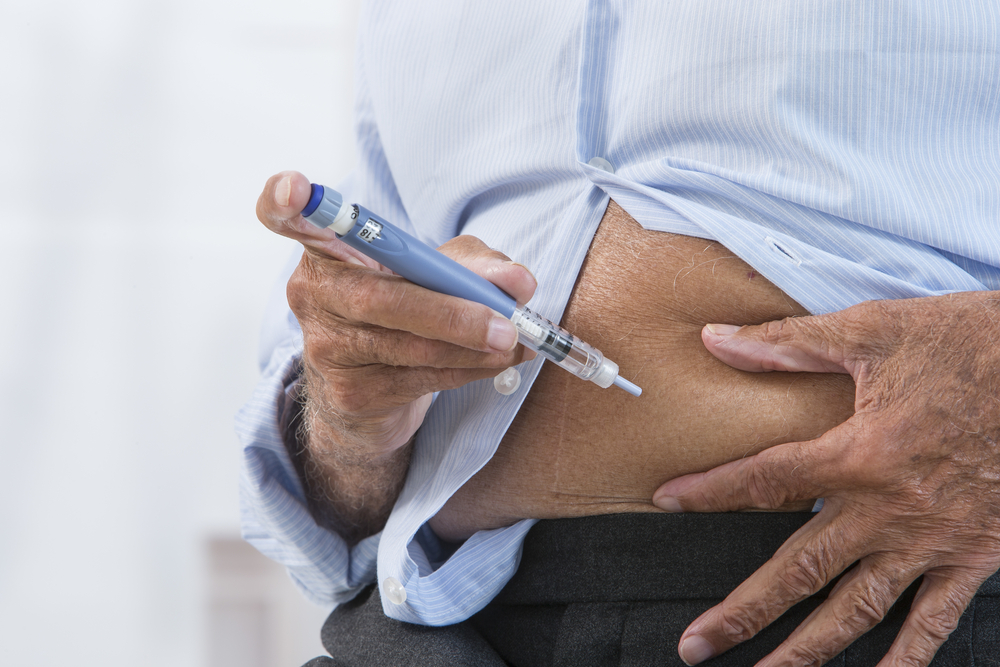What are GLP-1 Analogues (Incretin Mimetics)?
Contents
Glucagon-like peptide 1 (GLP-1) analogues or incretin mimetics, as they are sometimes called, are a class of medications that are commonly used to treat type 2 diabetes.
There are a few different members of the GLP-1 analogue inhibitor family, including:
Generic name |
Brand or Trade name |
|
Exenatide (twice-daily injection) |
Byetta |
|
Exenatide (once-weekly injection) |
Bydureon |
|
Liraglutide (once-daily injection) |
Victoza |
|
Lixisenatide (once-daily injection) |
Lixumia |
|
Dulaglutide (once-weekly injection) |
Trulicity |
|
Semaglutide (once-weekly injection) |
Ozempic |
|
Semaglutide (once daily tablet) |
Rybelsus |
|
Tirzapetide (once weekly injection) |
Mounjaro |
How do GLP-1 analogues work?
This type of medication works in the same way as a group of hormones called incretins. These hormones help the body produce more insulin when needed and reduce the amount of glucose being produced by the liver when it’s not needed.
Incretins also slow down the digestion of food so that glucose from your meals takes longer to be absorbed, and they can reduce your appetite and result in weight loss.
GLP-1 analogues reduce the symptoms of high blood glucose levels (such as feeling thirsty). In the long term, good control of blood glucose levels reduces the risk of developing problems with your eyes, kidneys and feet. Most people taking GLP-1 analogues also lose weight, which can be beneficial for a lot of people with type 2 diabetes.
Some GLP-1 analogues have also been shown to have additional benefits in protecting against heart disease and stroke.
How are GLP-1 analogues taken?
This group of medications can either be given by injection or as a once-daily tablet.
The injections are delivered by an injectable pen device, so you may hear them referred to as "non-insulin injectables". Depending on which medication you are on, the injections are given twice daily, once daily or once weekly.

Rybelsus
The tablet (Rybelsus) must be taken correctly for it to work properly:
- It can be taken at any time in the day, but should be taken on an empty stomach, so most people take it first thing in the morning.
- It should be swallowed whole with a sip of water (up to a maximum of half a glass, which is equivalent to 120 ml).
- Tablets should not be split, crushed or chewed as this may have an effect on the absorption of the tablet and mean that it doesn't work.
- You should wait at least 30 minutes before eating or drinking or taking any other tablets or medicines by mouth. Waiting less than 30 minutes reduces the absorption of the tablet and may mean that it will not work.
Tirzepatide (Mounjaro)
Tirzepatide is a medication that contains both a GLP-1 analogue and another incretin called Gastric inhibitory peptide (GIP), which has many of the same actions as GLP-1, so the two work together.
Tirzepatide is more likely to cause side effects than the other GLP-1 analogues. However, it also works better at reducing blood sugars and controlling weight.
If you take some other medications such as Warfarin or Levothyroxine, you may need more monitoring with blood tests when you start on Tirzepatide. In addition, if you are taking some forms of the contraceptive pill, you may need to use additional methods of contraception at the start of treatment and when you increase the dose of Tirzepatide. Your healthcare team will advise you of any monitoring or changes of medication that you might need.
What are the side effects of taking GLP-1 analogues?
Not everybody will experience side effects from taking this type of medication, however, the most common ones include:
- Diarrhoea
- Nausea
- Vomiting
- Headaches
- Dizziness
- Increased sweating
- Indigestion
- Constipation
- Loss of appetite
Most of the side effects usually go away over time. Sometimes reducing the dose can help.
However, if you experience severe and persistent stomach pain, which might extend to your back, with or without vomiting, stop taking the medicine and contact your doctor immediately. This may be a sign that your pancreas is inflamed. This complication is very rare.
If you experience any side effects, please discuss them with the doctor or nurse caring for you.
Who can have a GLP-1 analog or Tirzepatide?
Your healthcare team will talk to you about whether GLP-1 analogues or Tirzepatide might be right for you. They’ll think about how your diabetes is going, what treatment you’re on now, and if you have any other health issues. They will also only be able to recommend these medicines if you fit the NICE criteria (see below).
It’s good to remember that these medicines don’t work for everyone, and some people might get side effects or feel unwell when taking them.
The NICE criteria are as follows:
NICE recommends GLP-1 analogues or Tirzepatide (Mounjaro) for the treatment of adults with type 2 diabetes alongside diet and exercise when diabetes is insufficiently controlled, only if:
- triple therapy with metformin and 2 other oral antidiabetic drugs is ineffective, not tolerated or contraindicated, and
- a person has a body mass index (BMI) of 35 kg/m2 or more, and specific psychological or other medical problems associated with obesity, or
- a person has a BMI of less than 35 kg/m2, and:
- Insulin therapy would have significant occupational implications, or
- Weight loss would benefit other significant obesity-related complications.
NICE advise to use lower BMI thresholds (usually reduced by 2.5 kg/m2) for people from South Asian, Chinese, other Asian, Middle Eastern, Black African or African-Caribbean family backgrounds.
Who should not take GLP-1 analogues?
GLP-1 analogues are usually prescribed to adults who have type 2 diabetes. They may not be suitable for some people. You should tell your doctor before starting any of these medications if you:
- Have problems with your kidneys
- Have had gastrointestinal disease (particularly pancreatitis)
- Are pregnant, planning a pregnancy or breastfeeding
- Have had allergic reactions to any medications
GLP-1 analogues and Driving
GLP-1 analogues should not affect your ability to drive, cycle or use machinery or tools as long as your blood glucose levels are stable.
You should never drive with a low blood sugar level. On their own, GLP-1 analogues will not cause your blood glucose level to go too low (i.e. cause hypoglycaemia, which is classed as a blood glucose level less than 4 mmol/L), but they may increase the risk of this happening if you also take insulin or drugs called sulphonylureas (e.g. gliclazide).
Check with your diabetes care team if you would like further guidance, or have a look at the national guidelines for driving when you have diabetes.
What if I forget to take my medication?
If you forget to take a dose, then take it as soon as you remember unless it’s nearly time for your next dose. In this case, skip the missed dose and just take your next one as normal.
Do not take a double dose to make up for a missed one.
Getting the most from your medication
Continue to take your medication regularly unless your doctor tells you otherwise. It is important that you keep your regular clinic appointments.
If you have been advised by your doctor or nurse about changes to your diet, stopping smoking or taking regular exercise, it is important that you follow this advice.


